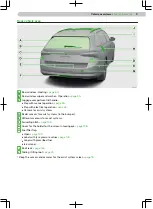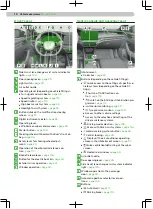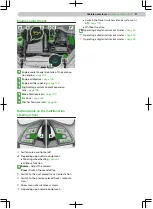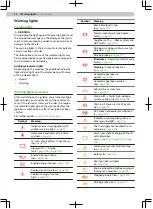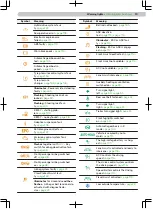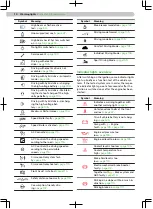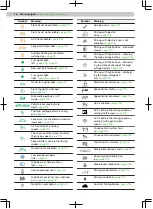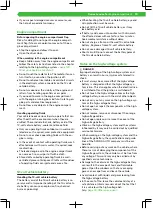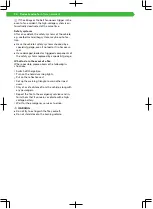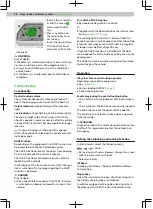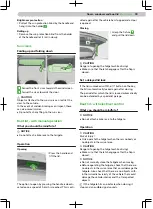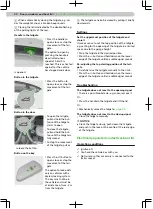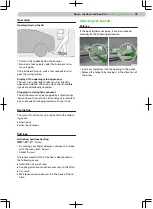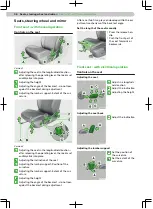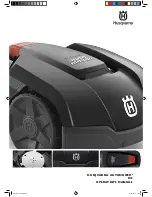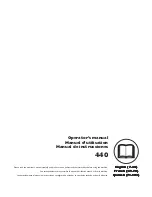
Safe driving
Introductory notes
▶
Pay attention when you are driving! As a driver, you
are fully responsible for road safety.
▶
Always adjust driving speed to the road conditions
as well as the traffic and weather conditions.
When the outside temperature is low lights up in
the instrument cluster.
Paying attention to warning signals
The driver information system warns you with indi-
cator lights and messages in the event of any faults.
Failure to follow the warnings may increase the risk
of accidents and injuries.
▶
If the vehicle issues a warning signal, then park the
vehicle safely and follow the information displayed
in the instrument cluster display and information in
this owner's manual.
Use assistance systems
The assistance systems are only for support and do
not absolve you from your responsibility for driving
the vehicle.
The assistance systems are subject to physical and
technical limitations. Therefore, in certain situations,
system reactions may be perceived as undesirable or
delayed.
▶
Stay alert and be ready to intervene.
▶
Familiarise yourself with the assistance systems,
their limitations and operating conditions.
▶
Activate, deactivate and adjust the assistance sys-
tems so that you have full control of the vehicle in
any traffic situation.
Driving with a loaded roof rack
When transporting objects on the roof rack, the ve-
hicle’s driving behaviour changes.
▶
Adapt your speed and driving style to this.
Towing a trailer
The vehicle’s handling characteristics change with a
trailer. The assistance systems may behave different-
ly.
▶
Drive more slowly, excessive speed can lead to loss
of control of the vehicle.
▶
Keep a larger distance from the vehicle in front.
▶
Do not exceed the max. vertical load and the per-
missible trailer load.
Driving through water
There must be no water ingress into the vehicle sys-
tems e.g. into the engine’s air intake system!
▶
Therefore, determine the water depth before driv-
ing through water. The water level must not ex-
ceed the lower edge of the lower beam.
▶
Drive at max. walking speed. Otherwise, a wave
may form in front of the vehicle, increasing the wa-
ter level.
▶
Never stop in the water, do not drive backwards
and never stop the engine.
Vehicle operation in different weather conditions
If you wish to operate your vehicle in countries with
different weather conditions from those specified,
please contact a ŠKODA Partner. They will advise
you if certain precautions need to be taken to ensure
the full functioning of the vehicle or to prevent dam-
age (e.g. coolant, 12-volt vehicle battery replace-
ment, etc.).
Is something wrong?
▶
Pay attention to changes in vehicle handling.
▶
If in doubt about safety, stop driving and seek the
help of a specialist garage.
▶
Unusual vibrations or the vehicle pulling to the side
may indicate a puncture.
▶
If tyre pressure loss is very quick, try to stop the
vehicle carefully without heavy steering or heavy
braking.
▶
Immediately remove foreign bodies stuck in the
tyre tread.
▶
Do not remove foreign objects that have penetra-
ted into the tyre. Check the tyre pressure and seek
the help of a specialised garage.
▶
Immediately remove any objects jammed under
the floor of the vehicle. These can damage the ve-
hicle or ignite and cause a fire.
Stop the vehicle safely.
A vehicle that has not been secured may roll away
and cause accidents.
▶
For parking, look for a place with suitable ground.
Do not park the vehicle on flammable materials
such as dried leaves, spilt fuel. Hot vehicle parts
can cause a fire.
Carry out the following activities in the specified or-
der when parking.
›
Stop the vehicle and keep the brake pedal de-
pressed.
›
Secure the vehicle with the parking brake.
›
Select the mode with the selector lever of the
automatic transmission.
›
Turn off the engine.
›
Release the brake pedal.
Exiting the vehicle
Do not leave children unattended in the vehicle!
▶
Children may injure themselves when handling the
seats, releasing the parking brake etc.
▶
In emergency situations, children are not able to
leave the vehicle on their own or help themselves.
▶
At high or low temperatures, there is danger to life.
22 Correct and safe › Safe driving


